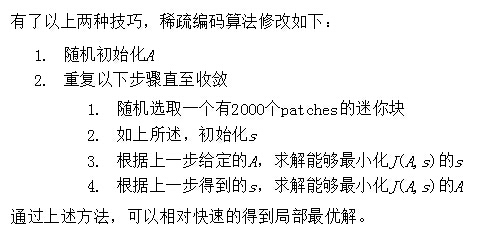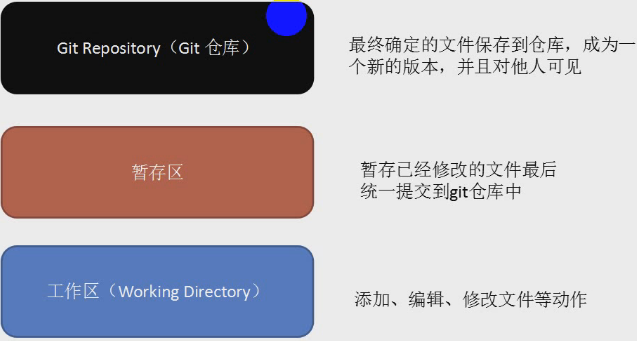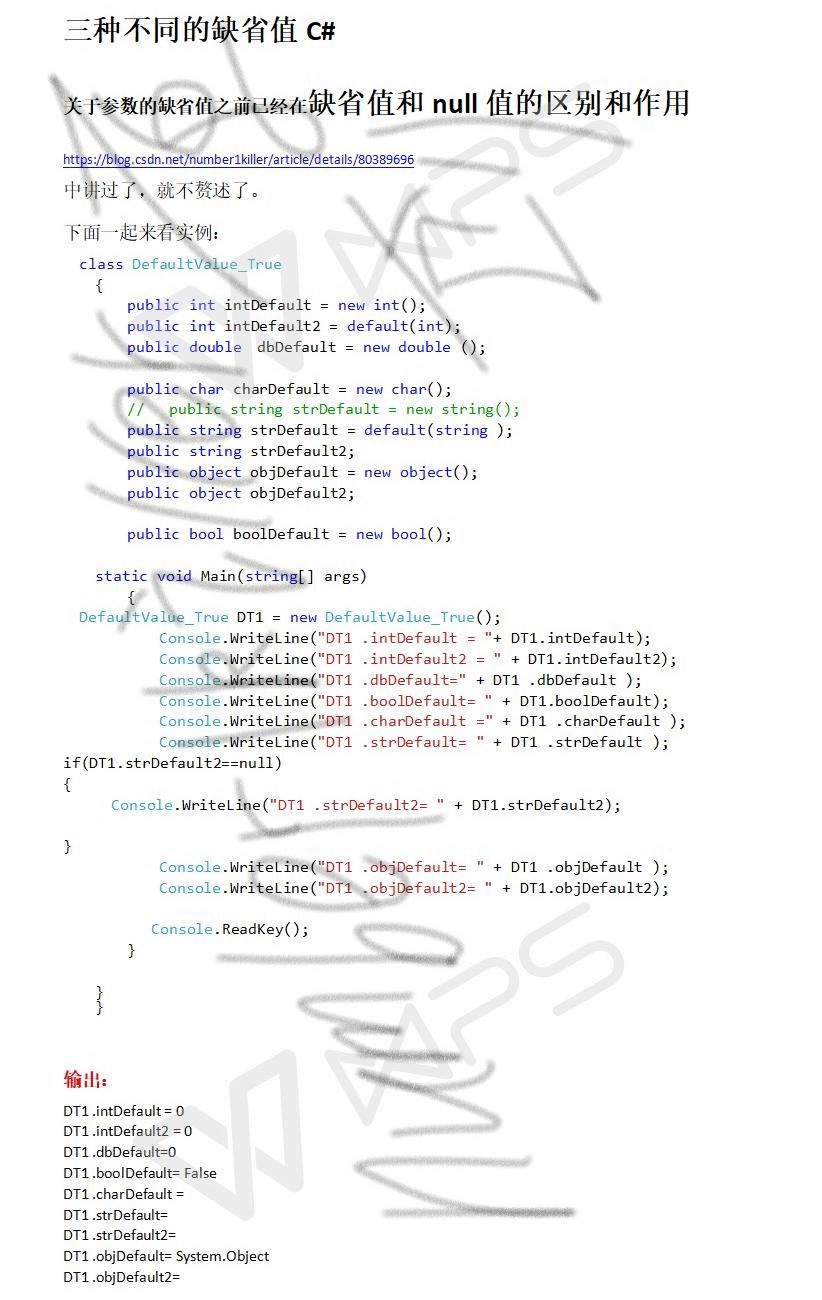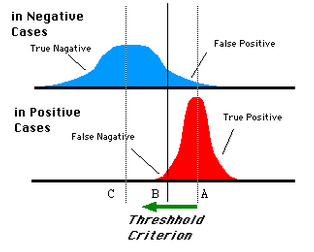UFLDL教程笔记及练习答案六(稀疏编码与稀疏编码自编码表达)
稀疏编码(SparseCoding)
sparse coding也是deep learning中一个重要的分支,同样能够提取出数据集很好的特征(稀疏的)。选择使用具有稀疏性的分量来表示我们的输入数据是有原因的,因为绝大多数的感官数据,比如自然图像,可以被表示成少量基本元素的叠加,在图像中这些基本元素可以是面或者线(人脑有大量的神经元,但对于某些图像或者边缘只有很少的神经元兴奋,其他都处于抑制状态)。
稀疏编码算法的目的就是找到一组基向量 使得我们能将输入向量x表示成这些基向量的线性组合:
使得我们能将输入向量x表示成这些基向量的线性组合:

这里构成的基向量要求是超完备的,即要求k大于n,这样的方程就大多情况会有无穷多个解,此时我们给它加入一个稀疏性的限制,最终的优化公式变成了如下形式:

其中S(ai)就是稀疏惩罚项,可以是L0或者L1范数,L1范数和L0范数都可以表示稀疏编码,L1范数是L0范数的最优凸近似,但是L1因具有比L0更好的优化求解特性而被广泛应用。
稀疏编码自编码表达:
将稀疏编码用到深度学习中,用于提取数据集良好的稀疏特征,设A为超完备的基向量,s表示输入数据最后的稀疏特征(也就是稀疏编码中的稀疏系数),这样就可以表示成X = A*s。
其实这里的A就等同于稀疏自编码中的W2,而s就是隐层的结点值。(当具有很多样本的时候,s就是一个矩阵,每一列表示的是一个样本的稀疏特征值)
最终的优化函数变成了:

优化步骤为:

可以采用以下两个trick来提高最后的迭代速度和精度。
(1)将样本表示成良好的“迷你块”,比如你有10000个样本,我们可以每次只随机选择2000个mini_patches进行迭代,这样不仅提高了迭代的速度,也提升了收敛的速度。
(2)良好的s初始化。因为我们的目标是X=As,因此交叉迭代优化的过程中,在A给定的情况下,我们可以将s初始化为s=AT*X,但这样可能会导致稀疏性的缺失,我们在做一个规范,这里其中的s的行数就等于A列数,然后用s的每个元素除以其所在A的那一列向量的2范数。
即  其中Ar表示矩阵A的第r列。这样对s做规范化处理就是为了保持较小的稀疏惩罚值。<个人认为UFLDL教程中该处A的下标是错误的。>
其中Ar表示矩阵A的第r列。这样对s做规范化处理就是为了保持较小的稀疏惩罚值。<个人认为UFLDL教程中该处A的下标是错误的。>
因此最后的优化算法步骤表示为:

注意:以上对s和A采用交叉迭代优化,其中我们会发现分别对s和A求导的时候,发现可以直接得出A的解析形式的解,因此在优化A的时候直接给出其解析形式的解就可以了,而s我们无法给出其解析形式的解,就需要用梯度迭代等无约束的优化问题了。
测试:当有一个新的样本x,我们需要用以上训练集得到的A来优化以上cost函数得到s就是该样本的稀疏特征。这样相比之前的前馈网络的,每次对新的数据样本进行“编码”,我们必须再次执行优化过程来得到所需的系数。
注:教程中拓扑稀疏编码的内容我还没有弄明白是如何得到groupMatrix的,这里就不误导大家了。
练习答案:
以下对grad的求解可以参看这篇blog:http://www.cnblogs.com/tornadomeet/archive/2013/04/16/3024292.html给出的推导结果。
Sparse_coding_exercise.m
%% CS294A/CS294W Sparse Coding Exercise% Instructions% ------------%% This file contains code that helps you get started on the% sparse coding exercise. In this exercise, you will need to modify% sparseCodingFeatureCost.m and sparseCodingWeightCost.m. You will also% need to modify this file, sparseCodingExercise.m slightly.% Add the paths to your earlier exercises if necessary% addpath /path/to/solution%%======================================================================%% STEP 0: Initialization% Here we initialize some parameters used for the exercise.numPatches = 20000; % number of patchesnumFeatures = 121; % number of features to learnpatchDim = 8; % patch dimensionvisibleSize = patchDim * patchDim;% dimension of the grouping region (poolDim x poolDim) for topographic sparse codingpoolDim = 3;% number of patches per batchbatchNumPatches = 2000;lambda = 5e-5; % L1-regularisation parameter (on features)epsilon = 1e-5; % L1-regularisation epsilon |x| ~ sqrt(x^2 + epsilon)gamma = 1e-2; % L2-regularisation parameter (on basis)%%======================================================================%% STEP 1: Sample patchesimages = load('IMAGES.mat');images = images.IMAGES;patches = sampleIMAGES(images, patchDim, numPatches);display_network(patches(:, 1:64));%%======================================================================%% STEP 2: Implement and check sparse coding cost functions% Implement the two sparse coding cost functions and check your gradients.% The two cost functions are% 1) sparseCodingFeatureCost (in sparseCodingFeatureCost.m) for the features% (used when optimizing for s, which is called featureMatrix in this exercise)% 2) sparseCodingWeightCost (in sparseCodingWeightCost.m) for the weights% (used when optimizing for A, which is called weightMatrix in this exericse)% We reduce the number of features and number of patches for debugging% numFeatures = 25;% patches = patches(:, 1:5);% numPatches = 5;weightMatrix = randn(visibleSize, numFeatures) * 0.005;featureMatrix = randn(numFeatures, numPatches) * 0.005;%% STEP 2a: Implement and test weight cost% Implement sparseCodingWeightCost in sparseCodingWeightCost.m and check% the gradient[cost, grad] = sparseCodingWeightCost(weightMatrix, featureMatrix, visibleSize, numFeatures, patches, gamma, lambda, epsilon);numgrad = computeNumericalGradient( @(x) sparseCodingWeightCost(x, featureMatrix, visibleSize, numFeatures, patches, gamma, lambda, epsilon), weightMatrix(:) );% Uncomment the blow line to display the numerical and analytic gradients side by side% disp([numgrad grad]);diff = norm(numgrad-grad)/norm(numgrad+grad);fprintf('Weight difference: %g\n', diff);assert(diff < 1e-8, 'Weight difference too large. Check your weight cost function. ');%% STEP 2b: Implement and test feature cost (non-topographic)% Implement sparseCodingFeatureCost in sparseCodingFeatureCost.m and check% the gradient. You may wish to implement the non-topographic version of% the cost function first, and extend it to the topographic version later.% Set epsilon to a larger value so checking the gradient numerically makes senseepsilon = 1e-2;% We pass in the identity matrix as the grouping matrix, putting each% feature in a group on its own.groupMatrix = eye(numFeatures);[cost, grad] = sparseCodingFeatureCost(weightMatrix, featureMatrix, visibleSize, numFeatures, patches, gamma, lambda, epsilon, groupMatrix);numgrad = computeNumericalGradient( @(x) sparseCodingFeatureCost(weightMatrix, x, visibleSize, numFeatures, patches, gamma, lambda, epsilon, groupMatrix), featureMatrix(:) );% Uncomment the blow line to display the numerical and analytic gradients side by side% disp([numgrad grad]);diff = norm(numgrad-grad)/norm(numgrad+grad);fprintf('Feature difference (non-topographic): %g\n', diff);assert(diff < 1e-8, 'Feature difference too large. Check your feature cost function. ');%% STEP 2c: Implement and test feature cost (topographic)% Implement sparseCodingFeatureCost in sparseCodingFeatureCost.m and check% the gradient. This time, we will pass a random grouping matrix in to% check if your costs and gradients are correct for the topographic% version.% Set epsilon to a larger value so checking the gradient numerically makes senseepsilon = 1e-2;% This time we pass in a random grouping matrix to check if the grouping is% correct.groupMatrix = rand(100, numFeatures);[cost, grad] = sparseCodingFeatureCost(weightMatrix, featureMatrix, visibleSize, numFeatures, patches, gamma, lambda, epsilon, groupMatrix);numgrad = computeNumericalGradient( @(x) sparseCodingFeatureCost(weightMatrix, x, visibleSize, numFeatures, patches, gamma, lambda, epsilon, groupMatrix), featureMatrix(:) );% Uncomment the blow line to display the numerical and analytic gradients side by side% disp([numgrad grad]);diff = norm(numgrad-grad)/norm(numgrad+grad);fprintf('Feature difference (topographic): %g\n', diff);assert(diff < 1e-8, 'Feature difference too large. Check your feature cost function. ');%%======================================================================%% STEP 3: Iterative optimization% Once you have implemented the cost functions, you can now optimize for% the objective iteratively. The code to do the iterative optimization% using mini-batching and good initialization of the features has already% been included for you.%% However, you will still need to derive and fill in the analytic solution% for optimizing the weight matrix given the features.% Derive the solution and implement it in the code below, verify the% gradient as described in the instructions below, and then run the% iterative optimization.% Initialize options for minFuncoptions.Method = 'lbfgs';options.display = 'off';options.verbose = 0;% Initialize matricesweightMatrix = rand(visibleSize, numFeatures);featureMatrix = rand(numFeatures, batchNumPatches);% Initialize grouping matrixassert(floor(sqrt(numFeatures)) ^2 == numFeatures, 'numFeatures should be a perfect square');donutDim = floor(sqrt(numFeatures));assert(donutDim * donutDim == numFeatures,'donutDim^2 must be equal to numFeatures');groupMatrix = zeros(numFeatures, donutDim, donutDim);groupNum = 1; %% 获得拓扑稀疏编码 这段处理不太懂啊!!for row = 1:donutDimfor col = 1:donutDimgroupMatrix(groupNum, 1:poolDim, 1:poolDim) = 1;groupNum = groupNum + 1;groupMatrix = circshift(groupMatrix, [0 0 -1]);endgroupMatrix = circshift(groupMatrix, [0 -1, 0]);endgroupMatrix = reshape(groupMatrix, numFeatures, numFeatures);if isequal(questdlg('Initialize grouping matrix for topographic or non-topographic sparse coding?', 'Topographic/non-topographic?', 'Non-topographic', 'Topographic', 'Non-topographic'), 'Non-topographic')groupMatrix = eye(numFeatures);end% Initial batchindices = randperm(numPatches);indices = indices(1:batchNumPatches);batchPatches = patches(:, indices);fprintf('%6s%12s%12s%12s%12s\n','Iter', 'fObj','fResidue','fSparsity','fWeight');for iteration = 1:200 %% 因为要交替优化直到最小化cost function, 所以才这样进行的error = weightMatrix * featureMatrix - batchPatches;error = sum(error(:) .^ 2) / batchNumPatches;fResidue = error;R = groupMatrix * (featureMatrix .^ 2);R = sqrt(R + epsilon);fSparsity = lambda * sum(R(:));fWeight = gamma * sum(weightMatrix(:) .^ 2);fprintf(' %4d %10.4f %10.4f %10.4f %10.4f\n', iteration, fResidue+fSparsity+fWeight, fResidue, fSparsity, fWeight) %% 以上这部分可以不用的,只是为了显示最终的% Select a new batchindices = randperm(numPatches); %% 重新挑选2000个样本用来进行训练indices = indices(1:batchNumPatches);batchPatches = patches(:, indices); %%% 重新挑选的样本% Reinitialize featureMatrix with respect to the new batchfeatureMatrix = weightMatrix' * batchPatches; %% trick 对featureMatrix(s)进行初始化 --技巧 方法normWM = sum(weightMatrix .^ 2)'; %%%%% 也就是weightMatrix矩阵每列的平方和featureMatrix = bsxfun(@rdivide, featureMatrix, normWM); %% featureMatrix除以上者% Optimize for feature matrixoptions.maxIter = 20; % 迭代20次,并对featureMatrix进行无约束优化[featureMatrix, cost] = minFunc( @(x) sparseCodingFeatureCost(weightMatrix, x, visibleSize, numFeatures, batchPatches, gamma, lambda, epsilon, groupMatrix), ...featureMatrix(:), options);featureMatrix = reshape(featureMatrix, numFeatures, batchNumPatches);% Optimize for weight matrixweightMatrix = zeros(visibleSize, numFeatures); %%% 通过直接求导得出对weightMatrix进行优化,这里无需进行梯度迭代或者牛顿法等得出最终的结果weightMatrix = batchPatches*featureMatrix'/(gamma*batchNumPatches* eye(size(featureMatrix, 1)) + featureMatrix*featureMatrix');% -------------------- YOUR CODE HERE --------------------% Instructions:% Fill in the analytic solution for weightMatrix that minimizes% the weight cost here.% Once that is done, use the code provided below to check that your% closed form solution is correct.% Once you have verified that your closed form solution is correct,% you should comment out the checking code before running the% optimization.[cost, grad] = sparseCodingWeightCost(weightMatrix, featureMatrix, visibleSize, numFeatures, batchPatches, gamma, lambda, epsilon, groupMatrix);assert(norm(grad) < 1e-12, 'Weight gradient should be close to 0. Check your closed form solution for weightMatrix again.')error('Weight gradient is okay. Comment out checking code before running optimization.');% -------------------- YOUR CODE HERE --------------------% Visualize learned basisfigure(1);display_network(weightMatrix);end
sparseCodingWeight.m
function [cost, grad] = sparseCodingWeightCost(weightMatrix, featureMatrix, visibleSize, numFeatures, patches, gamma, lambda, epsilon, groupMatrix)%sparseCodingWeightCost - given the features in featureMatrix,% computes the cost and gradient with respect to% the weights, given in weightMatrix% parameters% weightMatrix - the weight matrix. weightMatrix(:, c) is the cth basis% vector.% featureMatrix - the feature matrix. featureMatrix(:, c) is the features% for the cth example% visibleSize - number of pixels in the patches% numFeatures - number of features% patches - patches% gamma - weight decay parameter (on weightMatrix)% lambda - L1 sparsity weight (on featureMatrix)% epsilon - L1 sparsity epsilon% groupMatrix - the grouping matrix. groupMatrix(r, :) indicates the% features included in the rth group. groupMatrix(r, c)% is 1 if the cth feature is in the rth group and 0% otherwise.if exist('groupMatrix', 'var')assert(size(groupMatrix, 2) == numFeatures, 'groupMatrix has bad dimension');elsegroupMatrix = eye(numFeatures);endnumExamples = size(patches, 2);weightMatrix = reshape(weightMatrix, visibleSize, numFeatures);featureMatrix = reshape(featureMatrix, numFeatures, numExamples);% -------------------- YOUR CODE HERE --------------------% Instructions:% Write code to compute the cost and gradient with respect to the% weights given in weightMatrix.% -------------------- YOUR CODE HERE --------------------ave_square = sum(sum((weightMatrix * featureMatrix - patches).^2))./numExamples; %计算重构误差weight_decay = gamma * sum(sum(weightMatrix.^2)); %cost = ave_square + weight_decay;grad = (2*weightMatrix*featureMatrix*featureMatrix' - 2 * patches*featureMatrix')./numExamples + 2*gamma*weightMatrix;grad = grad(:);end
sparseCodingFeatureCost.m
function [cost, grad] = sparseCodingFeatureCost(weightMatrix, featureMatrix, visibleSize, numFeatures, patches, gamma, lambda, epsilon, groupMatrix)%sparseCodingFeatureCost - given the weights in weightMatrix,% computes the cost and gradient with respect to% the features, given in featureMatrix% parameters% weightMatrix - the weight matrix. weightMatrix(:, c) is the cth basis% vector.% featureMatrix - the feature matrix. featureMatrix(:, c) is the features% for the cth example% visibleSize - number of pixels in the patches% numFeatures - number of features% patches - patches% gamma - weight decay parameter (on weightMatrix)% lambda - L1 sparsity weight (on featureMatrix)% epsilon - L1 sparsity epsilon% groupMatrix - the grouping matrix. groupMatrix(r, :) indicates the% features included in the rth group. groupMatrix(r, c)% is 1 if the cth feature is in the rth group and 0% otherwise.isTopo = 1;if exist('groupMatrix', 'var')assert(size(groupMatrix, 2) == numFeatures, 'groupMatrix has bad dimension');if(isequal(groupMatrix, eye(numFeatures)))isTopo = 0;endelsegroupMatrix = eye(numFeatures);isTopo = 0;endnumExamples = size(patches, 2);weightMatrix = reshape(weightMatrix, visibleSize, numFeatures);featureMatrix = reshape(featureMatrix, numFeatures, numExamples);% -------------------- YOUR CODE HERE --------------------% Instructions:% Write code to compute the cost and gradient with respect to the% features given in featureMatrix.% You may wish to write the non-topographic version, ignoring% the grouping matrix groupMatrix first, and extend the% non-topographic version to the topographic version later.% -------------------- YOUR CODE HERE --------------------ave_square = sum(sum((weightMatrix * featureMatrix - patches).^2))./numExamples; % 计算重构误差sparsity = lambda .* sum(sum(sqrt( groupMatrix * (featureMatrix.^2) + epsilon))); %计算系数惩罚项cost = ave_square + sparsity;gradResidue = (2* weightMatrix'* weightMatrix*featureMatrix - 2*weightMatrix'*patches)./numExamples; %%+ lambda*featureMatrix./sqrt(featureMatrix.^2+epsilon);if ~isTopogradSparsity = lambda*featureMatrix./sqrt(featureMatrix.^2+epsilon); %%% 不是拓扑的稀疏编码elsegradSparsity = lambda * groupMatrix'*(groupMatrix *(featureMatrix .^ 2) + epsilon).^(0.5).*featureMatrix; %% 拓扑稀疏编码endgrad = gradResidue + gradSparsity;grad = grad(:);end
参考文献:
1:UFLDL教程http://ufldl.stanford.edu/wiki/index.php/UFLDL%E6%95%99%E7%A8%8B
2:http://blog.csdn.net/zouxy09/article/details/24971995/机器学习中的范数规则化之(一)L0、L1与L2范数
3:http://www.cnblogs.com/tornadomeet/archive/2013/04/16/3024292.htmlDeep learning:二十九(Sparse coding练习)
4:http://www.cnblogs.com/tornadomeet/archive/2013/04/13/3018393.htmlDeep learning:二十六(Sparse coding简单理解)



































还没有评论,来说两句吧...